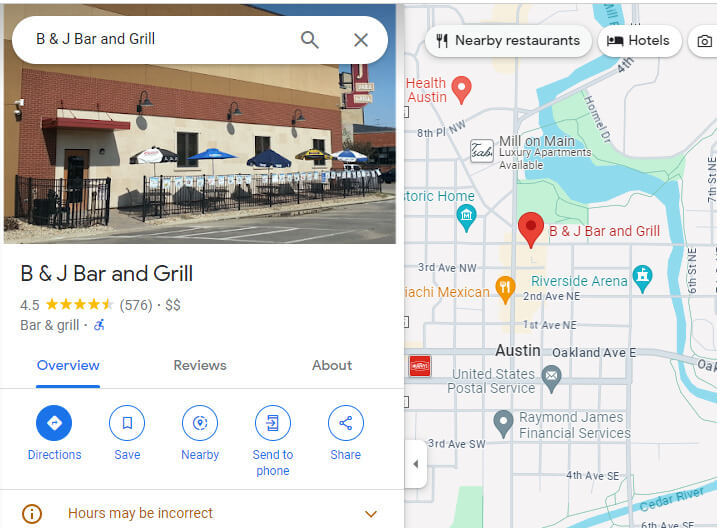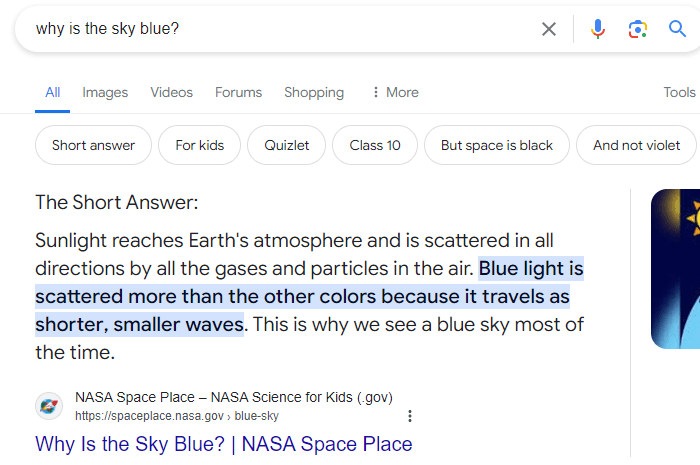Websites Then and Now: What Local Small Businesses Need to Know

As a business owner, you know that running a business has always required adapting to change, and the digital world is no different.
Remember ten years ago when people kept insisting that having a good website was the key to succeeding? And remember when they said that a good website was your company's business card and brochure, all rolled up into one old-timey metaphor?
While having a website is still important, the way people find and interact with businesses online has changed a lot over the past few years. Today, tools like Google Business Profiles, Google Maps, and snippets are crucial. Here’s why these tools matter and how they can help your business.
In A Nutshell: The Robots Are Winning
Search engines and online platforms are constantly evolving to make it easier for users to find the information they need quickly and efficiently. This means that when potential customers are looking for a product or service, they often rely on tools like Google Business Profiles, Google Maps, and snippets to get instant answers. These tools are designed to simplify the search process, providing users with immediate, relevant results without requiring them to sift through multiple websites.
For businesses, this shift means that being visible on these platforms is more important than ever. Instead of just focusing on having a well-designed website, businesses now need to ensure that they are easily found through these tools. The “robots” behind search engines are getting smarter at understanding what users want, and they prioritize results that deliver quick, accurate, and useful information.
By leveraging these tools effectively, businesses can meet customers where they are and provide the information they need, right when they need it.
Google Business Profiles: Your New Online Business Card
Think of Google Business Profiles (GBP) as the new "business card" that everyone can see. When someone searches for your business on Google, your GBP shows them important information like your address, phone number, hours of operation, photos, and even the all-important customer reviews. Consider the awesome B&J Bar & Grill, one of our Founding Sponsors of the Go! Austin Minnesota App, by the way.)
Note how their GBP shows a lot of helpful information on the main view, like restaurant hours, a menu button, directions, and a star rating with links to reviews. That's a pretty compelling profile, and, in most cases, means that users never have to visit the website.
For more detailed information on how to optimize and manage your Google Business Profile, visit Google's official support page.
Why Your GBP Matters:
- Better Visibility: A well-maintained Google Business Profile helps people find your business easily when they search online.
- Customer Interaction: Through GBP, customers can leave reviews and ask questions. You can respond to these, showing that you care about their feedback.
- Quick Information: People get what they need without having to click through to your website—just like handing them a business card with all the details.
Google Maps Listings: Guiding Customers to Your Door
Google Maps isn’t just for directions anymore. It’s a powerful tool that helps people discover local businesses. When your business is listed correctly on Google Maps, customers can easily find and get to you.
You also notice that the information from the GBP we discussed above is mirrored on the Google Map listing.

To learn more about how to get your business listed on Google Maps and make the most of this feature, check out: Get your business on Google Maps.
Why Google Maps Matter:
- Local Search: When people search for businesses “near me,” having a complete and accurate Google Maps listing helps them find you.
- Mobile Friendly: Many people use their phones to find businesses while they’re on the go. Being visible on Google Maps means they can find and visit you easily.
- Customer Insights: Google Maps shows you data about how customers find your business and where they are coming from, helping you understand your audience better.
Google Snippets: Answering Questions Instantly
Google snippets, or featured snippets, are short answers to questions that appear at the top of Google’s search results. These snippets pull information directly from websites and display it prominently, often without needing the user to click through to the site.
Consider this snippet that appears in response to "why is the sky blue?"
The Google algorithm determined that the NASA response was the most authoritative, and therefore chose to display a snippet from the space agency's website.
Am I likely to click into NASA's website after I have my question answered? No, not in this case. My curiosity is satisfied. Maybe I just needed a quick answer so I could win at Gravity Storm Brewery's Trivia Night.
That's a big change from the old days when users would have to click into a website and actually visit it to find the answer.
You might be approached by website companies who say they need to create these snippets for you on the backend of your website, but is that still true?
No. It used to be true, but not anymore for general search engine results. Search engines pull snippet content from "unstructured text" on web pages. This means that even if your website doesn’t use specific structured data formats, you can still have your content featured in snippets. Google’s algorithms are pretty smart about identifying and extracting relevant answers from the natural language content of your site.
That said, incorporating structured data—often referred to as "snippet metadata"—can enhance your chances of being featured in snippets. Structured data helps search engines understand the context of your content more clearly, which can improve how your information is presented in search results. Using schema markup might give you a competitive edge, especially in highly competitive markets, but I wouldn't suggest spending much money on it. Consider how to boost your website's authority* instead. That will be much more likely to result in being a featured snippet on search results.
* Site Authority is a topic for a different day, stay tuned.
For an in-depth understanding of how to get your content featured in Google snippets and best practices, refer to Google’s own guidelines: Featured snippets in Google search.
Why Snippets Matter:
- Increased Visibility: If your content appears in a snippet, more people will see it, which can lead to more business.
- Building Trust: Being featured in a snippet shows that Google trusts your information, which can make customers trust you more.
- Voice Search: As more people use voice search, snippets become even more important because voice assistants often read out these snippets as answers.
Websites Then and Now: What’s Changed?
Ten years ago, the focus was on having a great website as the primary way for customers to find you online. While a website is still important, it’s no longer the only way people discover businesses. Tools like Google Business Profiles, Google Maps, and snippets are changing the game.
Then:
- Main Focus: A great website.
- Customer Interaction: Mostly through contact forms or email.
- Finding Your Business: Mainly through searching for your website.
Now:
- Main Focus: Multiple online tools (GBP, Maps, snippets).
- Customer Interaction: Through reviews, Q&A on GBP, direct messages.
- Finding Your Business: Through search results, Maps, and snippets without needing to visit your website first.
What Should You Do Next?
Adapting to these new tools doesn’t mean your website is obsolete, but it does mean you need to think about how people are finding your business in new ways. Here’s what you can do:
- Update Your GBP: Make sure all your business information is correct and keep it updated.
- Optimize for Local Search: Use local keywords on your website and Google Business Profile to help people find you in their area.
- Create Relevant Content: Write content that answers common questions your customers might have. This increases the chance of your information being featured in a snippet.
- Engage with Customers: Respond to reviews and questions on your GBP to show that you value customer feedback.
The way people find and interact with local businesses online is evolving. By embracing tools like Google Business Profiles, Google Maps, and snippets, you can ensure your business stays visible and relevant. Think of it as expanding your digital toolbox to meet the needs of today’s customers.

Chaunce Stanton
Director of Marketing & Communications
Austin Area Chamber of Commerce
ABOUT THE AUTHOR
Chaunce Stanton is the Director of Marketing & Communications for the Austin Area Chamber of Commerce in Austin, Minnesota. He understands the challenges local businesses face when it comes to getting the word out, and tries his darndest to share helpful tips and insights so local businesses don't overspend on marketing tactics that are unnecessary or too expensive.



